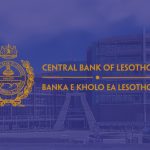
Monetary Policy Committee (MPC) Statement of the 30th May, 2018
May 30, 2018
Monetary Policy Committee (MPC) Statement of the 25th September, 2018
September 25, 2018The Central Bank of Lesotho Monetary Policy Committee (MPC) held its 72nd meeting on the 24th July 2018. The Committee considered international, regional and domestic economic developments and financial market conditions, in order to determine an appropriate monetary policy stance necessary to maintain macroeconomic stability.
The outlook for the global economy has remained broadly favourable in the short to medium term. Despite the observed economic recovery, there are a number of downside risks, especially in the medium term, arising from economic and non-economic factors. These include: normalisation of monetary policy in advanced economies; continued policy uncertainty resulting from the post-Brexit negotiations; United States’ fiscal and regulatory policies; and financial risks emanating from China’s strong credit growth. Other risks include protectionist policies, lack of market reforms and geo-political tensions.
Inflationary pressures among the major economies have remained subdued, despite an uptick in consumer inflation rates in the US and Euro area during the second quarter of 2018. At the same time, the monetary policy stance has remained broadly unchanged among the advanced and emerging market economies, with an exception of the US which moved towards tightening.
The growth outlook in South Africa is weaker than anticipated in May 2018.,The economic growth forecast for 2018 has been reduced from the previous 1.7 per cent to 1.2 per cent, following a contraction in the first quarter. On the other hand, the year-on-year headline inflation rate rose from 4.4 per cent in May to 4.6 per cent in June 2018. However, the inflation rate is expected to remain within the target range (3–6 percent), while moving closer to the upper end over the forecast horizon, reflecting pressure from exchange rate movements and international oil prices. Nonetheless, the repurchase (repo) rate has remained unchanged at 6.5 per cent per annum during the review period.
Lesotho’s economic performance is estimated to remain sluggish during the first quarter of 2018. That said, the labour market developments showed mixed signals in the first quarter, with both the number of migrant mineworkers and public sector employees declining. On the other hand, the manufacturing sector added more jobs, as orders increased.
The inflation rate remained subdued since the beginning of 2018. The rate of inflation, as measured by changes in the Consumer Price Index (CPI), increased to 4.0 per cent in June compared to 3.8 per cent in May 2019. The subdued rate is attributable mainly to the “food and non-alcoholic beverages” component, which accounts for the largest share of the CPI basket. There are risks due to expected increases in administered prices and continuing exchange rate depreciation.
The broad measure of money supply (M2) declined by 1.1 per cent between April and May 2018. The contributing factor was a sharp decrease in net foreign assets (NFA), with both the official and commercial banks’ NFA declining. In contrast, total private sector credit grew by 2.2 per cent in May 2018, compared to a negligible increase in April 2018. Growth in private sector credit was driven mainly by the credit to the business sector, which grew by 5.9 per cent. In addition, household credit has maintained a robust upward trend. In turn, commercial banks’ credit to deposit ratio rose from 53.7 per cent registered in April to 55.6
per cent in May.
The external sector position has improved during the first quarter of 2018, as reported in the previous MPC statement, with the current account registering a surplus. The surplus was a reflection of strong performance of the goods and income accounts. The gross official reserves measured in months of import cover remained under pressure, but sufficient at 4.1 months in March.
Government continued to be the net borrower in the last fiscal quarter of 2017/2018 as the total spending continued to outperform the total revenue. The deficit was financed by the issuance of Treasury Bonds and drawdown of deposits.
The domestic macro-economic outlook indicates that real economic activity will recover in the medium-term driven mainly by good performance in the primary and secondary sectors. In particular, the mining subsector will register strong growth attributable to commencement of commercial operations and reaching of full-production in some mines. The advanced infrastructure works associated with the Lesotho Highlands Water Project (LHWP) Phase II will boost the construction sub-sector. However, the services sector will remain under stress due to weak domestic demand.
In summary, the Committee noted that, despite the relatively benign global and domestic economic outlook, several risks remain. Inflationary pressures are to remain moderate, notwithstanding possible upside risks. In this context, the Committee will continue to monitor the global developments and their likely impact on domestic macroeconomic conditions, especially the CBL net international reserves (NIR), with the aim of taking appropriate corrective action.
Having considered the above developments, the MPC decided to:
- Decrease the NIR target floor from US$870 million to US$800 million. At this level, the NIR position is sufficient to maintain the peg between the Loti and the Rand.
- Maintain the CBL rate unchanged at 6.50 per cent per annum.
A.R. Matlanyane (PhD)
GOVERNOR
Contact Person:
Ephraim Moremoholo
+266 22232094
emoremoholo@centralbank.org.ls

